Text Annotation as Service
Data Tagging for Media
Aiixa empowers you to take charge of data tagging accuracy and develop a dependable stream of top-notch training data that elevates the performance of your NLP algorithms. Our platform offers comprehensive support for a broad range of annotation tasks, including named entity recognition, sentiment analysis, speech recognition, text and intent classification, text recognition, and many others. By partnering with Aiixa, you can be confident in the quality and consistency of your data annotation and unlock the full potential of your NLP applications.
Relevancy
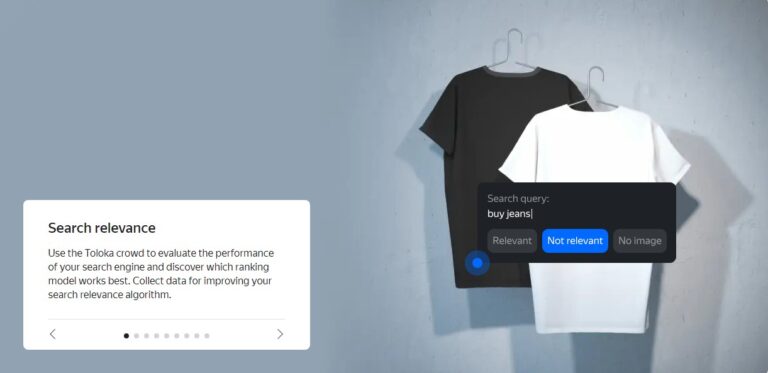
Benefits of search relevancy for data tagging:
Accurate search results: By using search relevancy techniques, you can identify the most relevant tags, keywords, and concepts that apply to specific data sets, improving the accuracy of your search results. This ensures that users are able to find the information they need quickly and efficiently.
Improved search performance: By collecting data on how users are interacting with your search engine, you can identify which ranking models are working best and optimize your search algorithms to improve overall search performance. This can help you to continually refine and improve the accuracy and relevance of your search results.
Enhanced user experience: By improving search relevancy, you can provide users with a more satisfying and efficient search experience, increasing user engagement and loyalty. This can lead to increased user satisfaction and retention, as well as improved business outcomes.
Use cases for search relevancy in data tagging:
E-commerce search: In e-commerce, search relevancy can be used to help customers find the products they are looking for more quickly and easily. By collecting data on user searches and interactions, businesses can optimize their search algorithms to provide more accurate and relevant search results, improving the customer experience and increasing sales.
Job search: In the job search market, search relevancy can be used to help job seekers find relevant job postings and employers find the right candidates. By collecting data on job searches and interactions, job boards can optimize their search algorithms to provide more accurate and relevant search results, improving the efficiency of the job search process for both job seekers and employers.
- Healthcare search: In healthcare, search relevancy can be used to help healthcare providers and patients find relevant medical information more quickly and easily. By collecting data on medical searches and interactions, healthcare websites and search engines can optimize their search algorithms to provide more accurate and relevant search results, improving patient outcomes and reducing the time and resources required to find the right information.
Categorize Text
Benefits of categorizing text for data tagging:
Improved organization and accessibility: By classifying or categorizing entire texts with predefined category tags, you can easily organize and access large volumes of data. This can help you to quickly find and retrieve specific data sets or information, saving time and improving overall efficiency.
Increased accuracy and consistency: Classifying or categorizing entire texts with predefined category tags can improve the accuracy and consistency of data tagging, reducing errors and discrepancies in the data. This can help to ensure that the data is of high quality and can be relied upon for important decision-making processes.
Enhanced data analysis: By classifying or categorizing entire texts with predefined category tags, you can easily analyze the data to identify patterns and trends, gain insights, and make informed decisions. This can help to improve business outcomes and drive success.
Use cases for categorizing text in data tagging:
Customer service: In customer service, classifying or categorizing customer inquiries and complaints with predefined category tags can help businesses to quickly identify common issues and prioritize responses. This can improve the efficiency and effectiveness of customer service operations and enhance the overall customer experience.
Legal documentation: In the legal industry, classifying or categorizing legal documents with predefined category tags can help lawyers and legal professionals to quickly find and retrieve specific information, such as case law, legal precedents, and relevant statutes. This can improve the efficiency and accuracy of legal research and support more informed decision-making.
Social media monitoring: In social media monitoring, classifying or categorizing social media posts and comments with predefined category tags can help businesses to identify trends, sentiment, and key topics of discussion. This can provide valuable insights into customer opinions, preferences, and behaviors, and inform marketing and product development strategies.
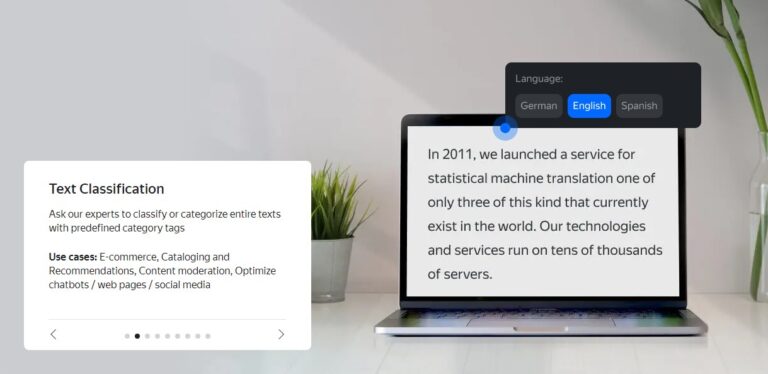
Sentiment Annotation

Benefits of sentiment annotation for data tagging:
Improved accuracy: Sentiment annotation can improve the accuracy of sentiment analysis by providing a standardized approach to categorizing text. By using a set of predefined categories to label text, sentiment analysis becomes more consistent and reliable.
Time-saving: Sentiment annotation can help to save time in the sentiment analysis process. By categorizing text into predefined sentiment categories, the process of sentiment analysis can be automated to a greater degree, reducing the amount of time and resources required to complete the analysis.
Insights and analysis: Sentiment annotation can provide valuable insights and analysis on customer opinions and preferences. By categorizing text according to sentiment, businesses can identify trends and patterns in customer sentiment, which can be used to inform marketing and product development strategies.
Use cases for sentiment annotation in data tagging:
Social media monitoring: Social media platforms are a treasure trove of customer feedback and opinions. Sentiment annotation can be used to categorize text-based posts on social media into positive, negative, or neutral categories, providing valuable insights into customer sentiment towards a particular product or service.
Customer feedback analysis: Businesses receive feedback from customers in a variety of forms, such as surveys, reviews, and support tickets. Sentiment annotation can be used to categorize this feedback into sentiment categories, allowing businesses to quickly identify areas for improvement or highlight positive experiences.
Product and service reviews: Sentiment annotation can be used to categorize product and service reviews into positive, negative, or neutral categories. This can help businesses to quickly identify issues with their products or services, as well as highlight positive aspects that could be leveraged in marketing materials.
Intent Recognition
Benefits of intent recognition for data tagging:
- Precise facial analysis: Facial landmarks provide precise locations of specific facial features, such as the eyes, nose, and mouth. This enables machine learning models to accurately analyze facial expressions, emotions, and other characteristics, which is useful for a variety of applications, such as security, entertainment, and healthcare.
- Efficient data labeling: Facial landmarks provide an efficient way to label large datasets of facial images. This is because they can be automatically detected and annotated using machine learning algorithms, which significantly reduces the time and cost of manual labeling.
Business insights: Intent recognition can provide valuable insights into customer needs and preferences. By categorizing user queries into different intent categories, businesses can gain a better understanding of the most common customer inquiries and adjust their products, services, or marketing strategies accordingly.
Use cases for intent recognition in data tagging:
Chatbots and virtual assistants: Chatbots and virtual assistants can use intent recognition to categorize user queries and provide appropriate responses. This can help to improve the user experience and reduce the workload on customer service representatives.
E-commerce search: E-commerce platforms can use intent recognition to categorize user search queries and provide relevant product recommendations. This can help to increase conversion rates and improve the overall shopping experience for users.
- Healthcare triage: Healthcare providers can use intent recognition to categorize patient queries and direct them to the appropriate care provider or treatment option. This can help to improve patient outcomes and reduce the burden on healthcare professionals.
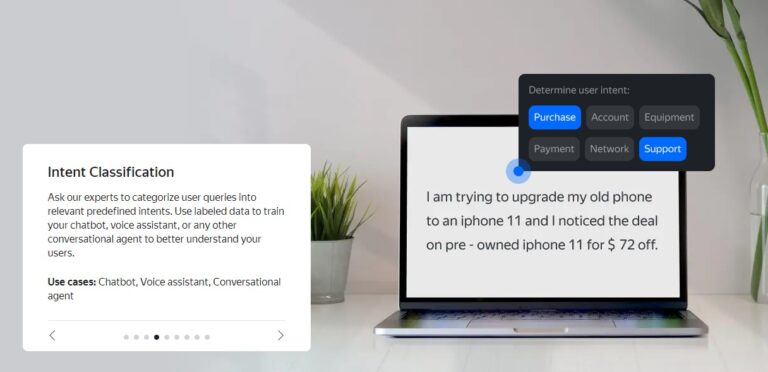
Dialog Collection

Benefits of dialog classification for data tagging:
Improved Natural Language Processing (NLP) models: Dialog data collection can help to improve NLP models by providing a large and diverse dataset of natural language conversations. This can help NLP models to better understand language and improve their accuracy in identifying intent and generating appropriate responses.
Enhanced chatbot or virtual assistant performance: Dialog data collection can help to enhance the performance of chatbots and virtual assistants by providing them with a more diverse range of training data. This can help them to better understand user intent and provide more accurate and helpful responses.
Valuable insights into customer needs: Dialog data collection can provide valuable insights into customer needs, preferences, and behaviors. By analyzing dialog data, businesses can gain a better understanding of customer pain points, common queries, and preferred communication styles. This can help them to improve their products, services, and customer engagement strategies.
Use cases for dialog classification in data tagging:
Chatbot and virtual assistant development: Dialog data collection is commonly used in the development of chatbots and virtual assistants. Dialog data can be collected from a range of sources, including chat logs, call center recordings, and online forums. This data can be used to train chatbots and virtual assistants to better understand user intent and generate appropriate responses.
Customer service and support: Dialog data collection can also be used in the context of customer service and support. By collecting and analyzing customer conversations, businesses can gain valuable insights into common queries, pain points, and preferred communication styles. This can help them to improve their support offerings and provide better customer experiences.
Language model development: Dialog data collection can be used in the development of language models. Language models are used in a range of applications, including machine translation, text-to-speech synthesis, and sentiment analysis. Dialog data can be used to train language models to better understand natural language conversations and improve their accuracy in identifying intent and generating appropriate responses.
Entity Extraction
Benefits of entity extraction for data tagging:
Improved data organization: Entity extraction helps to categorize and label text data by identifying and extracting specific entities, such as people, places, organizations, and products. This can improve data organization and make it easier to search and analyze large volumes of text data.
Enhanced natural language processing: Entity extraction can enhance natural language processing (NLP) algorithms by providing context around specific entities mentioned in text. This can help NLP algorithms to better understand the meaning and intent behind text, and generate more accurate and relevant results.
- Enhanced decision making: Entity extraction can also help businesses to make more informed decisions by providing insights into trends and patterns related to specific entities. For example, by analyzing customer feedback and reviews, businesses can identify common complaints or areas for improvement related to specific products or services, and take appropriate action to address these issues.
Use cases for entity extraction in data tagging:
- Information retrieval: Entity extraction can be used to categorize and label text data to improve information retrieval. For example, in a search engine, entity extraction can be used to identify and extract specific entities such as people, places, and organizations mentioned in a query or document, and return relevant results based on these entities.
Social media analysis: Entity extraction can be used to categorize and label text data from social media platforms to gain insights into customer behavior and sentiment. For example, by analyzing social media posts and comments related to a specific product or service, businesses can identify trends and patterns related to specific entities, such as customer complaints or positive reviews.
Fraud detection: Entity extraction can be used to categorize and label text data to detect potential instances of fraud. For example, in financial services, entity extraction can be used to identify and extract specific entities such as names, account numbers, and transaction amounts mentioned in text data to flag potential instances of fraud or money laundering.
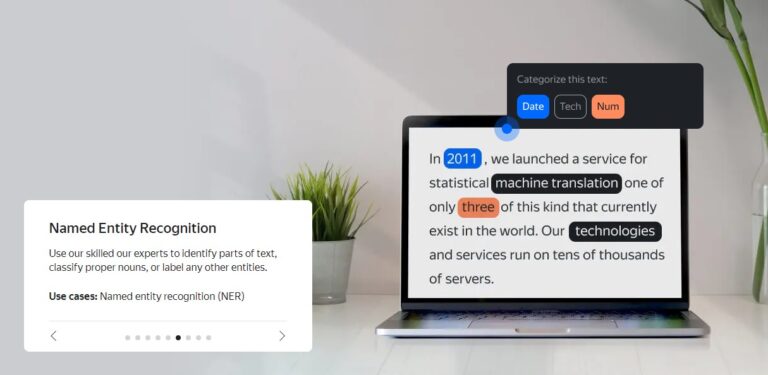
Audio Capture
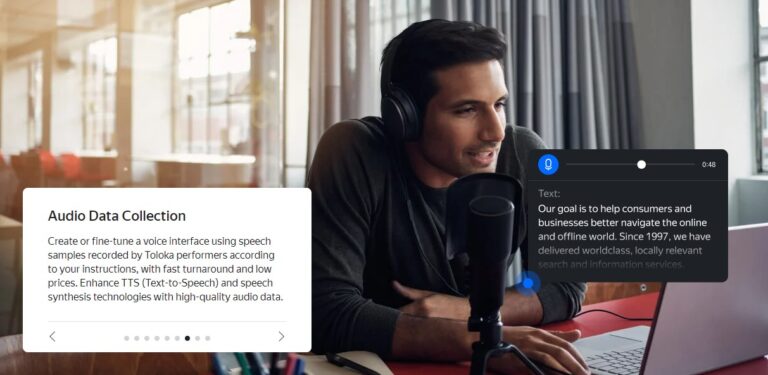
Benefits of audio capture for data tagging:
Improved accuracy: Capturing audio data can improve the accuracy of speech recognition models. By collecting a large and diverse dataset of speech samples, voice interfaces can be trained to recognize a wider range of accents, dialects, and speech patterns, improving their overall accuracy.
Enhanced user experience: Audio capturing can help create a more seamless and natural user experience for voice interfaces. By capturing and analyzing speech samples from users, voice interfaces can be personalized to better understand individual users’ speech patterns and preferences, providing more accurate and relevant responses.
Scalability: Audio capturing can be used to create a scalable voice interface that can handle large volumes of requests. By capturing and processing speech samples, voice interfaces can be designed to handle a high volume of user requests simultaneously, improving overall scalability and reliability.
Use cases for audio capture in data tagging:
Virtual assistants: Audio capturing can be used to create voice interfaces for virtual assistants such as Siri, Alexa, and Google Assistant. By capturing speech samples from users, these voice assistants can be trained to recognize and respond to a wide range of requests and commands, improving their overall usefulness and efficiency.
Customer service chatbots: Audio capturing can also be used to train chatbots to provide customer service support. By capturing speech samples from customers, chatbots can be trained to recognize and respond to a wide range of requests, providing fast and efficient customer service support.
Voice-controlled devices: Audio capturing can be used to create voice interfaces for a range of smart devices such as smart speakers, TVs, and home appliances. By capturing speech samples from users, these devices can be trained to recognize and respond to a range of voice commands, providing a more intuitive and convenient user experience.
Audio Conversion
Benefits of audio conversion for data tagging:
Improved accessibility: Audio conversion allows individuals with hearing impairments or other disabilities to access audio content. By converting audio to text, individuals who may not be able to listen to the audio can still access the information.
Enhanced searchability: By transcribing audio content, it becomes searchable and easier to find specific information within the audio. This is particularly useful for businesses that need to search through large volumes of audio content to find specific keywords or phrases.
Efficient note-taking: Audio conversion can be useful for individuals who need to take notes during meetings or lectures. By transcribing the audio, individuals can refer back to the text later and quickly find important information without having to listen to the audio again.
Use cases for audio conversion in data tagging:
Legal proceedings: Transcribing audio recordings of legal proceedings, such as depositions or court hearings, is crucial for documentation and record keeping. It allows lawyers and legal professionals to easily search and find specific information within the audio, and also provides a written record of the proceedings.
Market research: Audio conversion can be used for market research, such as transcribing focus group discussions or customer interviews. This allows researchers to analyze the data and extract insights more easily.
Education and training: Audio conversion can be useful for transcribing educational lectures or training sessions, allowing students or trainees to review the content at their own pace and refer back to the text as needed. It can also be helpful for individuals with hearing impairments who may not be able to listen to the audio content.

Categorizing Audio

Benefits of categorizing audio for data tagging:
Better organization: Categorizing audio can help in better organization and management of audio files. With proper categorization, it becomes easier to locate specific audio files and also reduces the chances of losing or misplacing important audio files.
Enhanced searchability: Categorizing audio based on different criteria such as speaker, topic, date, and so on, can make it easier to search and find relevant audio files. This can be particularly useful in large audio archives where searching for specific audio files can be time-consuming and tedious.
Improved analysis: Categorizing audio can aid in improved analysis of audio data. By categorizing audio based on specific criteria, it becomes easier to identify patterns and trends that may not be immediately apparent. This can be particularly useful in areas such as speech recognition and sentiment analysis, where the analysis of audio data is critical to making accurate assessments.
Use cases for categorizing audio in data tagging:
Voice command recognition: Categorizing audio can be useful for developing a voice recognition system that can respond to specific commands or phrases. By categorizing audio commands, the system can accurately identify what the user is asking for and provide the appropriate response.
Speaker identification: Categorizing audio can also help identify who is speaking in a recording, which is useful in situations such as forensic investigations or identifying fraudulent calls in customer service.
Emotion recognition: Categorizing audio can help identify the emotional state of the speaker in a recording, which is useful for applications such as analyzing customer feedback or evaluating the emotional tone of a speech.
